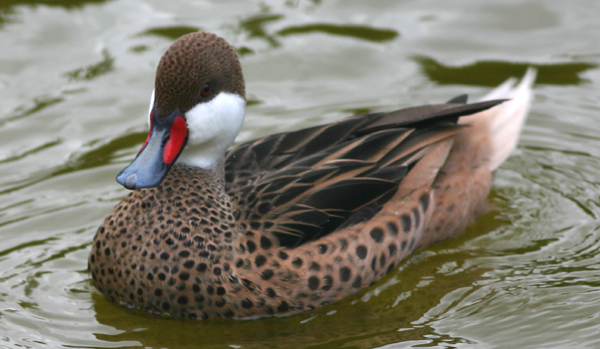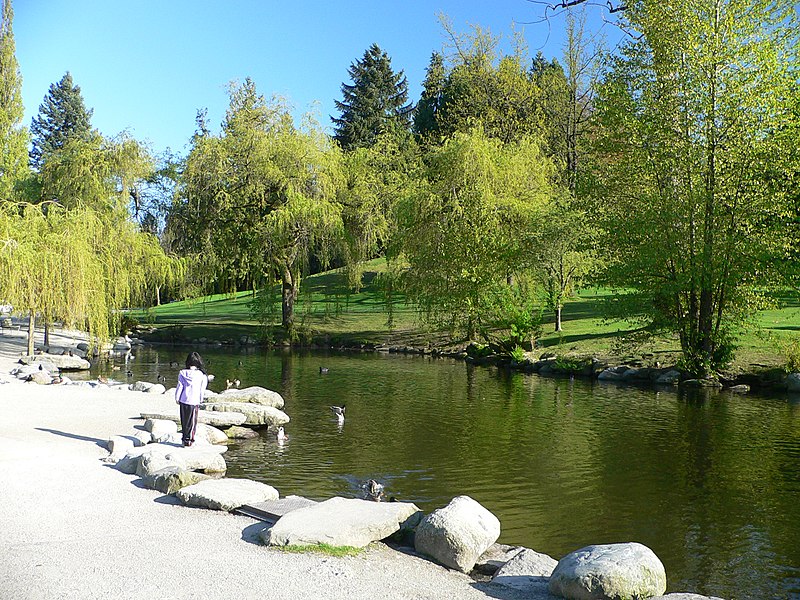Goldeneye are small tree-hole nesting northern hemisphere seaducks belonging to the genus Bucephala. Their plumage is black and white, and they eat fish, crustaceans and other marine life.
The Bufflehead was formerly separated in its own genus Charitonetta, while the goldeneyes proper were mistakenly placed in Clangula, the genus of the Long-tailed Duck which at that time was placed in Harelda.
The three living species are
Ducks
Followers
domingo, 5 de setembro de 2010
quinta-feira, 2 de setembro de 2010
Duck Game: Duck Hunt
Duck Hunt is a video game for the Nintendo Entertainment System (NES) game console system in which players use the NES Zapper to shoot ducks on screen for points. The game was developed and published by Nintendo, and was released in 1984 in Japan. The ducks appear one or two at a time, and the player is given three shots to shoot them down.
quarta-feira, 1 de setembro de 2010
Duck Jokes
1- What time does a duck wake up?
At the quack of dawn!
At the quack of dawn!
2 - How do you get down from a duck?
A ladder! :>
3-What does a duck eat with soup?
Quackers
Put it on my bill
Duck of Week: Dabbling Duck
“Dabblers” are ducks that tip up in order to feed, scrounging through shallow water and mud in search of plants and insects, and these ducks will also feed readily on land. The most common dabbling duck species is the mallard, but the northern pintail, American wigeon and different teals are also dabblers.
terça-feira, 31 de agosto de 2010
Duck Pond
Duck Pond
A duck pond is a pond for ducks and other water fowl.
Duck ponds provide exceptional habitat for water fowl and other types of birds, who use the water to bathe in and drink.
Types of pond
Typically, such ponds are round, oval or kidney-shaped. An example is the lily pond in the University Parks at Oxford in England, constructed in 1925. Often, as in public parks, such ponds are artificial and ornamental in design. Sometimes they may be less ornamental, as for example in a farmyard or flooded quarry. A small domestic version of the duck pond is at Knowle Farm in Derbyshire.
Some duck ponds are purposely built for the sport of duck hunting. These flight ponds are constructed by hunters and wildfowlers to attract ducks, such as mallard, teal, bufflehead and widgeon, at dawn and at dusk. The ponds have shallow edges to allow ducks to reach food on the bottom. Barley is often used to attract or hold the birds.
segunda-feira, 30 de agosto de 2010
Species / Types of Ducks
1. Dabbling Duck
“Dabblers” are ducks that tip up in order to feed, scrounging through shallow water and mud in search of plants and insects, and these ducks will also feed readily on land. The most common dabbling duck species is the mallard, but the northern pintail, American wigeon and different teals are also dabblers.
2. Diving Duck
Diving ducks are agile swimmers that dive far beneath the surface of the water in search of food, including fish, insects and aquatic plants. These ducks prefer to stay in the water and can be ungainly on land. Diving duck species include the scaups, goldeneyes, canvasback, rosybill and redhead.
3. Eider
These types of sea-ducks are found in very northern, Arctic habitats, and they’re well known for their lush down and its spectacular insulating properties that protect them from the harsh cold. Eider species include the common, spectacled, Steller’s and king eider.
4. Goldeneye
Aptly named for their brilliant yellow eyes, goldeneye duck species are diving ducks characterized by their big, round heads. They nest in tree holes and have sharp black and white plumage. Goldeneye species include the common and Barrow’s goldeneyes, though buffleheads are sometimes categorized as goldeneyes as well.
5. Merganser
The most prominent features of these slim ducks are their narrow, serrated, hooked bills. These are the only ducks that regularly eat a large amount of fish, and their bills are specialized to make them keen hunters. Species include the hooded, common, and red-breasted merganser.
6. Perching Duck
Perching ducks have claws on their webbed feet and can regularly be found perching in trees along wooded waterways and other areas with appropriate trees for nesting. The Muscovy, pink-eared, wood and mandarin ducks are example of perching ducks.
7. Scoter
Scoters are bulky sea-ducks with dark plumage and swollen, brightly colored bills. These birds can be found in northern regions and along marine habitats, and species include the black, surf and velvet scoters.
8. Sea-Duck
Sea-ducks are so named because they are primarily marine birds found in coastal habitats, though they can range further inland during the nesting season and migration. These are bulky birds that have special glands to help them tolerate salt water. Sea-duck species include the eiders, scoters, goldeneyes and mergansers.
9. Stifftail
The stifftails are aptly named diving ducks with spiky stiff tails which they use as rudders while swimming. The tail may also be held angled or vertically as a breeding or territorial display. Stifftails include the ruddy duck, masked duck and blue-billed duck.
10. Teal
Teals are different types of dabbling ducks that often have brightly colored, distinctive plumage, including fantastic speculum coloration. These ducks prefer to feed along the surface of the water as opposed to tipping up. Teal species include the cinnamon, green-winged and silver teal.
11. Whistling-Duck
These tropical ducks have long legs and necks, unlike typical compact duck proportions. These birds are named for their gregarious whistling calls, and species include the black-bellied, fulvous and white-faced whistling-ducks.
12. Domestic Duck
Not a wild species, domestic ducks are instead escapees from farms, gardens and zoos. These ducks frequently congregate in mixed flocks on urban and suburban ponds, and their indistinct plumage and mottled colors shows a high degree of hybridization with other domestic and wild birds.
Subscrever:
Mensagens (Atom)





















